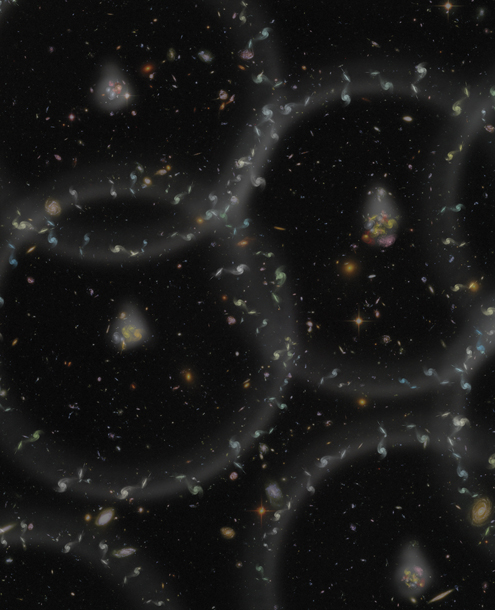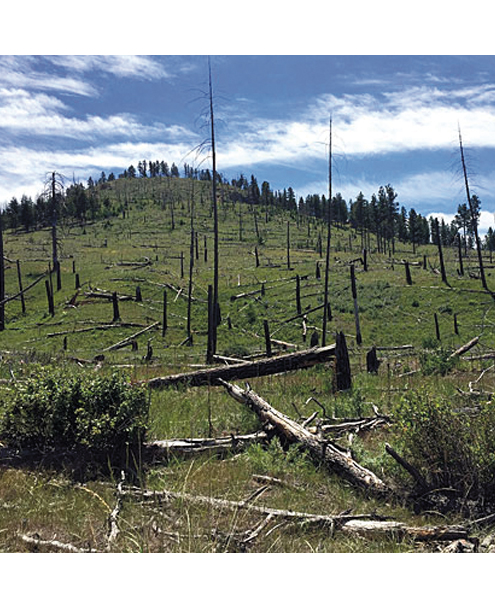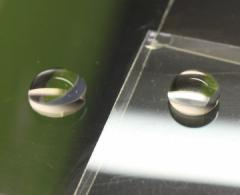
This Article From Issue
May-June 2019
Volume 107, Number 3
Page 138
In this roundup, managing editor Stacey Lutkoski summarizes notable recent developments in scientific research, selected from reports compiled in the free electronic newsletter Sigma Xi SmartBrief.
Second Patient in HIV Remission
A patient infected with HIV has no sign of the disease after undergoing a stem-cell transplant. The man, known as the London patient, is the second person to have experienced HIV remission following a stem-cell transplant; the first, known as the Berlin patient, was reported in 2009. Both patients underwent allogeneic hematopoietic stem-cell transplantation from donors with a genetic mutation known as CCR5Δ32/Δ32, which made the donors resistant to HIV. The London patient had been diagnosed with HIV in 2003 and began undergoing antiretroviral therapy in 2012. He stopped the treatment 16 months after the transplant, and 18 months later his HIV-1 is still in remission. The success indicates that the Berlin patient’s remission was not a fluke, and that this method may be a viable treatment option for other individuals infected with HIV. Although it is unclear whether the London patient is cured, the results are promising.
Gupta, R. K., et al. HIV-1 remission following CCR5Δ32/Δ32 haematopoietic stem-cell transplantation. Nature doi:10.1038/s41586 -019-1027-4 (March 5)
Neutrinos from the Big Bang

© 2010 The Regents of the University of California, through the Lawrence Berkeley National Laboratory
Physicists have identified evidence of neutrinos that were released in the first second after the Big Bang, 13.8 billion years ago. The subatomic particles are difficult to detect because they have no charge, have very little energy, and can pass straight through other matter. So rather than looking for the elusive neutrinos themselves, the physicists investigated how the particles influenced other cosmic objects that are more easily observed, such as galaxies. Similar to how a pebble dropped into a pool will create concentric circles of ripples, the Big Bang resulted in 3D rings—or shells—of galaxies. The physicists observed that the gravitational pull from neutrinos released by the Big Bang affected the ways these galaxies are distributed across the universe, forcing matter from the inner side of shells to the outer side. Their discovery is the first evidence of how neutrinos helped shape the Universe.
Baumann, D., et al. First constraint on the neutrino-induced phase shift in the spectrum of baryon acoustic oscillations. Nature Physics doi: 10.1038/s41567-019-0435-6 (February 25)
Sexual Disparity in NIH Grants
A review of first-time National Institutes of Health (NIH) grant awardees found that female recipients received less funding than comparably qualified male recipients. Data scientists from Northwestern University analyzed grant amounts from 2006 through 2017 using the NIH Principal Investigator (PI) database. They filtered the results to ensure the applicants were from similar institutions and had comparable publication histories. The team found that female first-time PIs received a median of $126,615, whereas male first-time PIs received a median of $165,721. At the top 50 NIH-funded institutions, women received a median of $41,003 less than comparably qualified men. The researchers point out that federal funding levels affect the perception of research quality and, consequently, professional advancement. Therefore the findings may also in part explain the higher levels of female attrition in scientific careers.
Oliveira, D. F. M., Y. Ma, T. K. Woodruff, and B. Uzzi. Comparison of National Institutes of Health grants amounts to first-time male and female principal investigators. Journal of the American Medical Association 321:898–900 (March 5)
Forest Regeneration Is at Risk

Kimberley Davis
Climate change has led to an increase in wildfires, and the warming planet is making it more difficult for forests to bounce back. Ecologists from the University of Montana studied low-elevation forests in the western United States to see how wildfires affected two conifer species: the ponderosa pine and the Douglas fir. They found that mature trees can survive in changing climates, but the warmer environment is inhospitable to seedlings. As the forests are thinned of their older, seed-producing trees and seedlings fail to take root, these conifer forests are at risk of dying out. The loss of these conifers may lead to vegetation and ecosystem transitions in the American West.
Davis, K. T., et al. Wildfires and climate change push low-elevation forests across a critical climate threshold for tree regeneration. Proceedings of the National Academy of Sciences of the U.S.A. doi:10.1073/pnas.1815107116 (March 11)
Smashing Asteroids
In a moment of Hollywood synchronism, the summer of 1998 saw the release of Deep Impact and Armageddon, two disaster films in which heroes blow up cosmic objects to prevent them from slamming into Earth and wiping out all life. New research suggests that destroying an asteroid will take a lot more than an enormous explosion. A mechanical engineer, a planetary scientist, and an astronomer collaborated on a model in which a 1.2-kilometer-wide basalt projectile hit a 25-kilometer-wide asteroid at 5 kilometers per second. The theoretical asteroid broke into pieces, but a core remained with enough gravity to pull the fragments back together. The results challenge previous impact models, which had shown the asteroids being pulverized into sand. NASA is currently preparing for its 2022 Double Asteroid Redirection Test, which may provide a better solution for any future celestial threats.
El Mir, C., K. T. Ramesh, and D. C. Richardson. A new hybrid framework for simulating hypervelocity asteroid impacts and gravitational reaccumulation. Icarus 231:1013–1025 (March 15)

American Scientist Comments and Discussion
To discuss our articles or comment on them, please share them and tag American Scientist on social media platforms. Here are links to our profiles on Twitter, Facebook, and LinkedIn.
If we re-share your post, we will moderate comments/discussion following our comments policy.